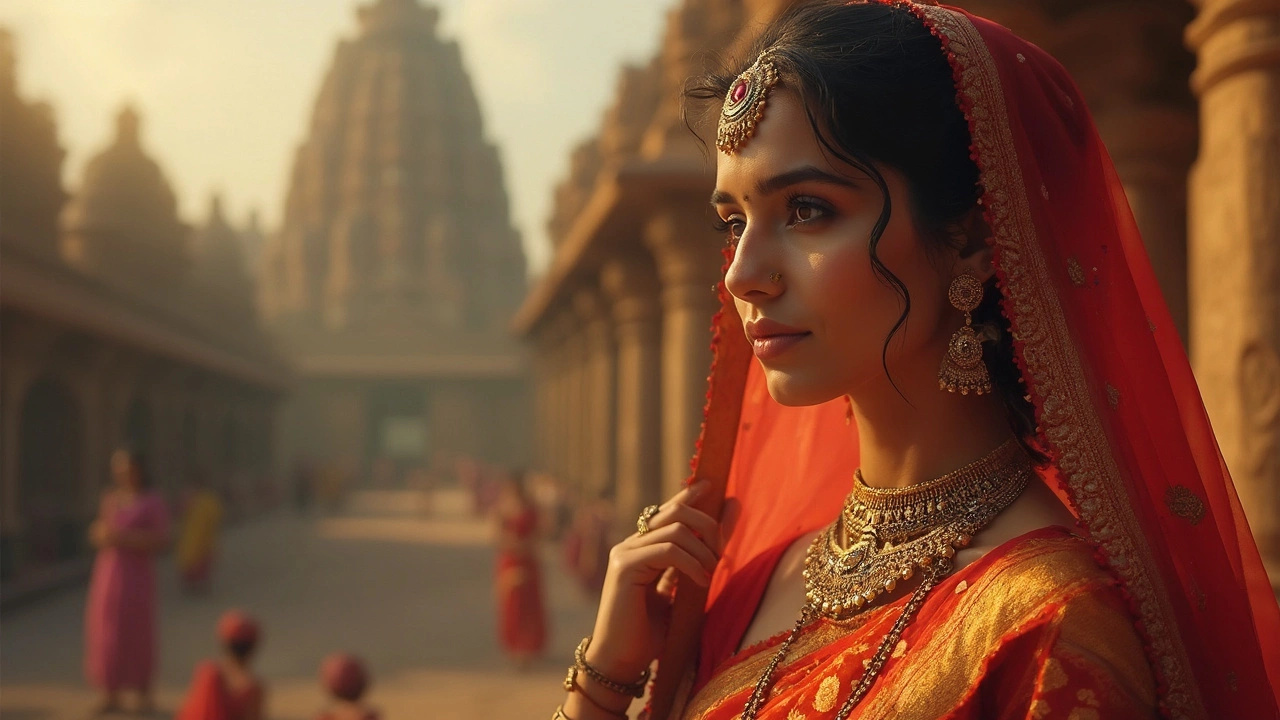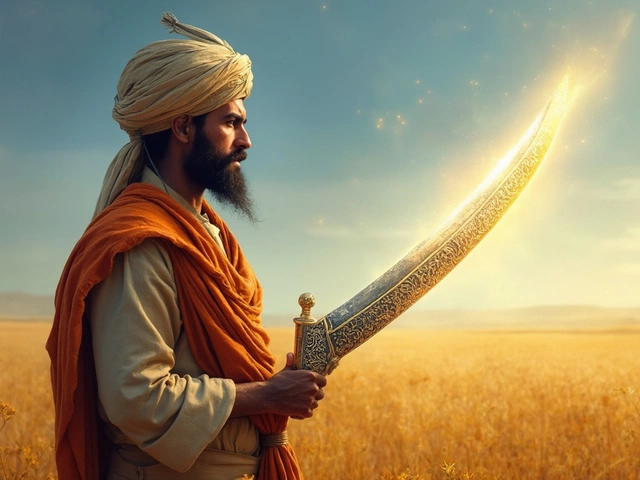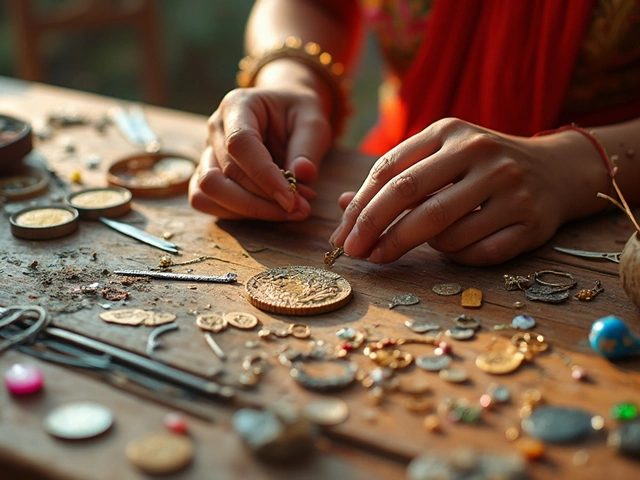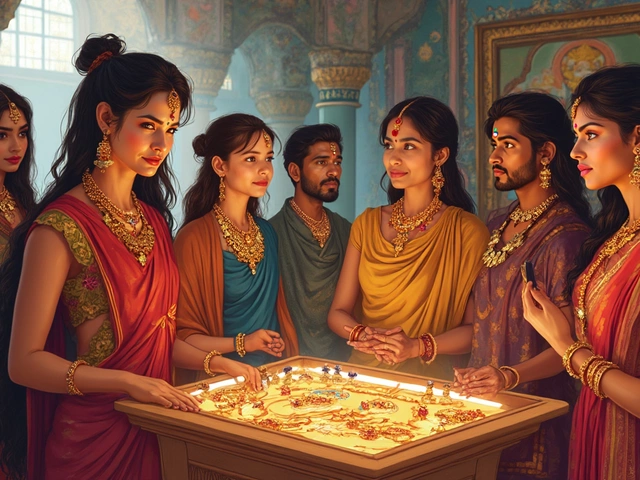The mangalsutra is more than just a necklace—it's a vital part of Hindu weddings. When a Hindu bride wears it, she's not just accessorizing; she's donning a symbol of her marital status and the deep, sacred bond with her husband. But how many of us know where this tradition comes from?
Traditionally, the mangalsutra originated in Southern India and has been a part of the Hindu culture for centuries. The term itself combines 'mangal,' meaning holy or auspicious, and 'sutra,' meaning thread. So, it's not just fancy jewelry; it's an emblem of love, commitment, and mutual respect in a marriage.
Though it's predominantly associated with Hinduism, the symbolism of a sacred thread exists in other religions too, albeit in different forms. Each region and community put its own twist on the design, incorporating elements that hold personal and cultural significance. Ever peaked into your grandma’s jewelry box and compared it with what’s trending today? The differences tell fascinating tales.
- The Origin of Mangalsutra
- Cultural and Religious Significance
- Designs Through the Ages
- Traditions and Modern Adaptations
- Regional Variations
- Buying Tips: Finding the Right Mangalsutra
The Origin of Mangalsutra
Diving into the history of the mangalsutra is like taking a walk back in time to ancient India. This cherished piece of jewelry, evolving over centuries, originated primarily from the southern part of the country. Back then, it wasn't just an accessory; it was a significant seal of marriage for Hindu women.
The tradition of wearing a mangalsutra is steeped in symbolism. 'Mangal' means auspicious, and 'sutra' means thread, so it essentially translates to an auspicious thread. Its historical roots come from Tamil Nadu, where the 'thaali' or 'thirumangalyam' was used during marriage ceremonies. Eventually, the concept spread to various parts of India, adopting regional nuances along the way.
In the early days, a mangalsutra typically consisted of a simple yellow thread or a small chain with two gold pendants, symbolizing unity between the couple. This design has evolved, reflecting personal tastes and societal influences while keeping the core symbolism intact.
Interestingly, the notion of an identifiable marital symbol isn’t unique to Hinduism. Similar practices were observed in different cultures within India and elsewhere—like the wedding bands in Western countries. Each tradition underscores the universal need to signify commitment and love.
The mangalsutra has continuously evolved, but its core remains the same—a blend of tradition and modernity, capturing the essence of everlasting bonds.
Cultural and Religious Significance
The mangalsutra is more than bling—it's essential in a Hindu marriage, symbolizing a wife's vow to be with her husband through thick and thin. Right after the vows are exchanged, it's tied by the groom around the bride's neck, marking the moment their lives are forever connected. It serves as a visible reminder of a couple's love and commitment, akin to wedding rings in Western culture.
The cultural roots of the mangalsutra are deeply embedded in Hindu tradition. It's said in Hindu scriptures that Parvati, the goddess of love and devotion, mandated its use. The idea is that the black beads ward off evil spirits while the gold represents prosperity.
One cultural expert noted, "The mangalsutra is not just a piece of jewelry; it's a cultural thread that connects generations of Hindu families."
Beyond the Hindu tradition, other communities have their versions too. For instance, in some Muslim marriages in India, you might find a similar custom of gifting a necklace designed with cultural flair. Though it doesn't always mirror the exact symbolism, the gesture of exchanging sacred necklaces shows similarities in recognizing marital bonds.
Each region in India embraces its own design style. For example, Maharashtrian designs might include two bowls, representing their family tradition, while in Tamil Nadu, the design might be more intricate with gold coins (kasu) featuring images of deities.
These cultural pieces are increasingly seeing changes due to modern lifestyles. Many women now prefer lightweight or detachable designs so they can merge tradition with comfort, adapting to both everyday life and special occasions.
Designs Through the Ages
The mangalsutra has seen a fascinating evolution over the years. Originally, it started as a simple thread with black beads, meant to protect the couple from evil forces. But as time went on, creativity took over, and the designs became a playground for artistic expression.
Back in the day, these pieces were predominantly handcrafted, relying on traditional materials like gold, which was a marker of prosperity and purity. You'd often find them featuring black beads interspersed with small gold coins or other minimalist elements.
Fast forward to the modern era, the game has changed, with more women and designers bringing their own flair. You have everything from sleek, modern styles to those that scream tradition. Diamonds, emeralds, and rubies? They’re fair game now. Designers have made it possible to choose according to personal taste while still respecting cultural roots.
Contemporary designs often blend traditional elements with modern aesthetics. Think of sleek pendants, or intricate, angular patterns replacing the usual circular designs. What’s cool is how these pieces now come in varying lengths and styles to match both western and ethnic outfits!
It’s interesting to see how the mangalsutra has adapted to today’s lifestyle while keeping its deep-rooted cultural essence intact. And as shopping options have exploded, there’s something for every bride out there, no matter her style. It keeps the tradition alive, yet lets each piece tell its own unique story.
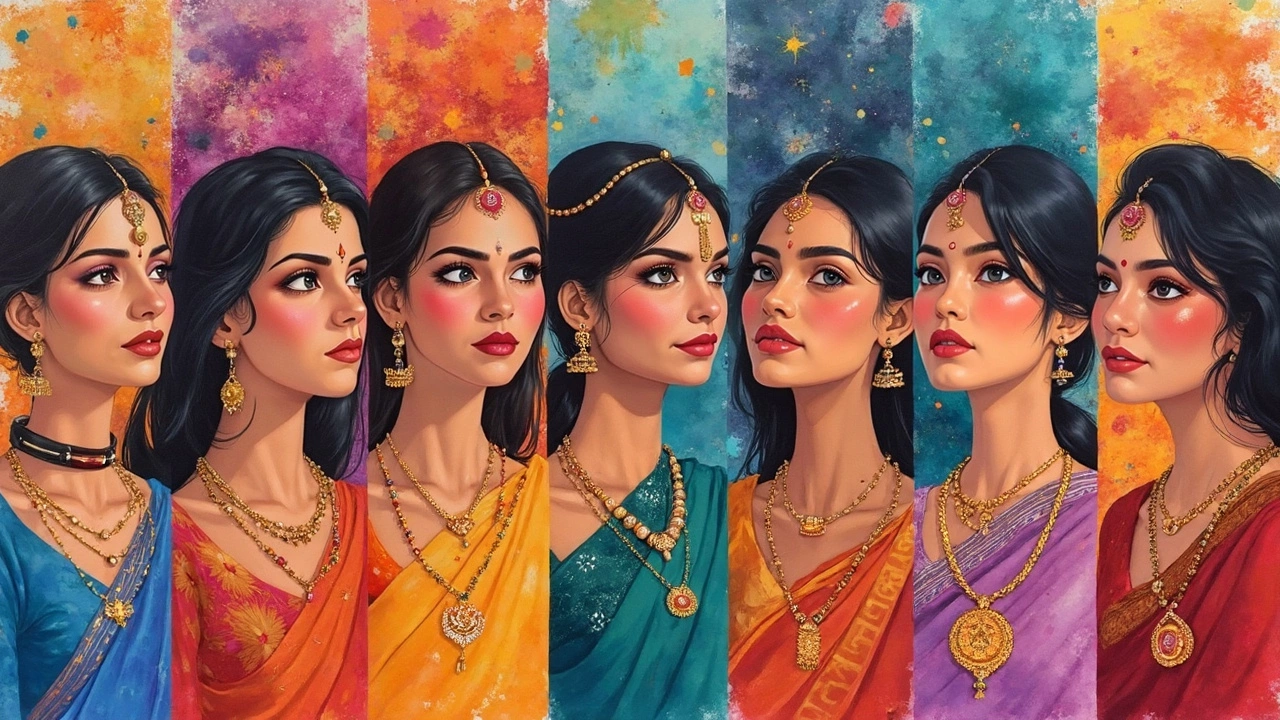
Traditions and Modern Adaptations
The mangalsutra has long been a cherished symbol of marriage in Hindu culture. Traditionally, it was a simple string with black beads, believed to ward off evil and protect the marriage. Couples across India cherish this tradition, and it’s often the highlight of wedding ceremonies.
But times change, right? The classic design has evolved, and today, brides have a ton of options depending on their taste and lifestyle. What's cool is how these adaptations keep the cultural importance intact while allowing room for personal expression. From diamond-studded versions to minimalist designs, modern brides are spoilt for choice.
Manish Malhotra, renowned Indian fashion designer, once said,
"Marriage is a fusion of traditions and aspirations, and the mangalsutra brings these two beautifully together."
Brides these days often opt for mangalsutras that fit into their everyday lives. Think shorter chains that don't snag on clothes or intricate designs that look sleek yet quintessential.
Here’s how modern adaptations blend with tradition:
- Multifunctional Designs: Some mangalsutras can double up as bracelets or pendants, catering to women who prefer versatility.
- Material Choices: From gold to white gold to platinum, the material can vary significantly, offering more options for personalization.
- Customizable Beads: While the traditional black beads remain a staple, many brides include personalized charms or even initials for a personal touch.
For those interested in the latest trends, here are some quick tips:
- Consider your daily routine when choosing the design and length.
- Mix and match materials—like gold with diamond accents—for a modern twist.
- Don’t shy away from expressing your personal style with customizable elements.
Bottom line, whether you stick to tradition or lean towards modern designs, your mangalsutra should be as unique as your journey.
Regional Variations
A journey across India will show you how mangalsutra designs vary from one region to another, each carrying its own unique charm. Let's dig a little into these interesting differences.
In Maharashtra, the mangalsutra typically features a simple yet elegant design with black and gold beads. This design signifies longevity and safety for the couple. Down south in Tamil Nadu, you'll find the 'Thirumangalyam,' a specially shaped pendant on the necklace that often features ornate and detailed designs.
Traveling up north, in places like Uttar Pradesh and Bihar, it's common to see mangalsutras with long chains and lavish pendants. The focus here is often on intricate craftsmanship. Over in Gujarat, the style might include corals and pearls, blending vibrant colors that showcase the region's love for kaleidoscopic art.
"The black beads and gold in the mangalsutra hold a deep meaning, symbolizing protection from evil and the sanctity of the marriage bond," says Shree Devi, a renowned jewelry historian.
Each state's design often mirrors more than just aesthetics; they reflect local traditions and sentiments. Interestingly, in a few regions, like West Bengal, the concept of a modest thread takes precedence, without much emphasis on black beads—it's called the 'mangalsutra' only in spirit, representing the same unity and bond.
For those exploring mangalsutra designs, considering these regional influences can be quite enlightening. You might find the piece that speaks to you not just by its look but by the story it tells.
Buying Tips: Finding the Right Mangalsutra
Choosing the perfect mangalsutra can feel like a big deal, and it kinda is. This piece of jewelry is gonna be something you cherish forever, right? Let's dive into some tips that can help you pick the one that's just right for you.
First things first, think about design. You want a piece that reflects your style and something you’ll love wearing every day. Are you into traditional designs or do you lean more towards modern, sleek jewelry? You’ll find everything from simple gold chains with a few beads to intricate designs with diamonds and gemstones.
And hey, don’t forget to consider the quality. It's important to check the kind of gold used, typically 22k or 18k, depending on your style and budget. A higher karat means a richer color but can also be softer, so balance beauty with durability.
Check the length and thickness too. You want something that suits your neckline and feels comfortable. Usually, 16 to 20 inches is a sweet spot for most, but it's really about what makes you feel good.
- Budget: Set a budget before you start shopping. Mangalsutras can vary widely in price.
- Try it on: Make sure to try it on and see how it feels and looks on you.
- Customization: Some jewelers offer customization, so you can add a personal touch!
Lastly, make sure to buy from a reputable jeweler. It’s not just about getting a good deal; it's about ensuring you get a genuine piece. Check for hallmark stamps as they indicate the purity of gold.
With these tips in hand, you're now all set to find a mangalsutra that you’ll treasure for years to come. Happy shopping!
